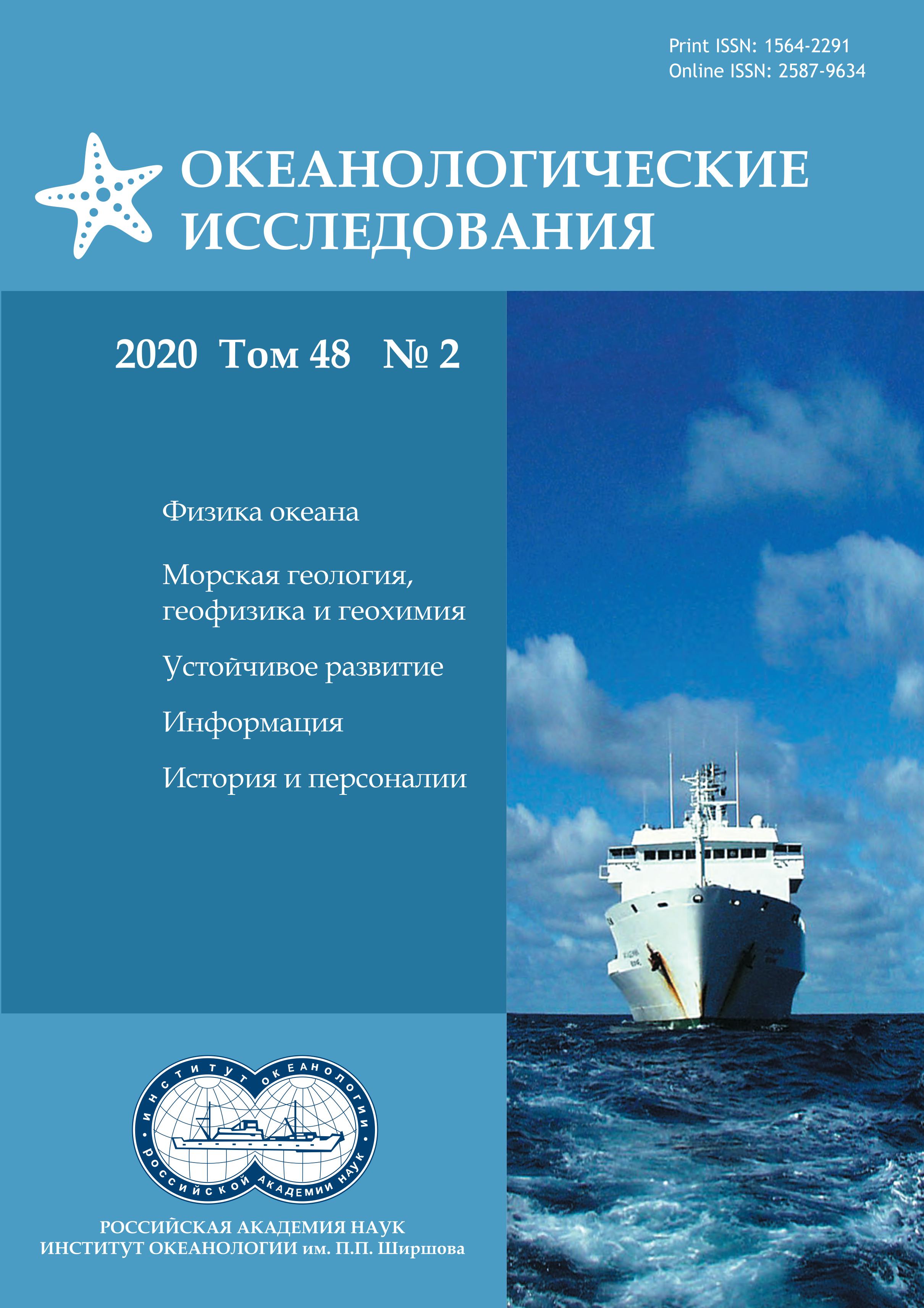РАСПРОСТРАНЕНИЕ МОРСКОГО ЛЬДА В ЮГО-ВОСТОЧНОЙ ЧАСТИ БАЛТИЙСКОГО МОРЯ ПО СПУТНИКОВЫМ РАДИОЛОКАЦИОННЫМ ДАННЫМ (2004–2019 гг.)
Аннотация
Российская часть Юго-Восточной Балтики обладает своеобразным ледовым режимом, который определяется географическим положением и климатическими условиями. Климатические изменения глобального масштаба привели к резкому изменению ледовых условий. Для исследования распространения морского льда в акватории широко используются спутниковые данные. Преимуществами радиолокационных изображений (РЛИ) со спутников, оснащенных радаром с синтезированной апертурой (РСА), являются широкая полоса обзора и независимость от дневного света и облачности. За 2004–2019 гг. с 1 декабря по 31 марта проанализировано 840 радиолокационных изображений Юго-Восточной Балтики. Показано, что в современных условиях ледяные явления в ЮВ Балтике происходят не каждый год. Выявленные пространственно-временные изменения ледового режима определяются последствиями климатических изменений в юго-восточной части Балтийского моря. Интенсивность льдообразования варьируется в зависимости от температурных условий. Установлено, что льдообразование начинается преимущественно во второй половине января–начале февраля. Для существования устойчивых ледяных полей необходимы среднесуточные температуры воздуха ниже –5 °С, наблюдающиеся в течение 5 и более дней. Средняя продолжительность наблюдения морского льда составляет 22 дня за сезон. Вероятность наблюдения морского льда со спутника максимальна в феврале. Самый ледовитый месяц – февраль с максимальной продолжительностью наблюдения льда и максимальной площадью распространения.
Литература
- Доклад об особенностях климата на территории Российской Федерации за 2019 год. М.: Росгидромет, 2020. 97 с. // http://climatechange.igce.ru/index.php?option=com_docman&Itemid=73&gid=27&lang=ru / (дата обращения: 22.06.2020).
- Лаврова О.Ю., Каримова С.С., Митягина М.И., Бочарова Т.Ю. Оперативный спутниковый мониторинг акваторий Черного, Балтийского и Каспийского морей в 2009–2010 годах // Современные проблемы дистанционного зондирования Земли из космоса. 2010. Т. 7. № 3. С. 168–485.
- Нефть и окружающая среда Калининградской области. М.; Калининград: Янтарный сказ, 2008. Т. II: Море / под ред. В.В. Сивкова, Ю.С. Каджояна, О.Е. Пичужкиной, В.Н. Фельдмана. Калининград: Терра Балтика, 2012. 576 с.
- Стонт Ж.И., Буканова Т.В., Крек Е.В. Изменчивость климатических характеристик прибрежной части Юго-Восточной Балтики в начале XXI века // Вестник БФУ им. Канта. 2020. № 1. С.81–94.
- Стонт Ж.И., Демидов А.Н. Современные тенденции изменчивости температуры воздуха над акваторией Юго-Восточной Балтики // Вестник Московского университета. Серия 5. География. 2015. № 2. C. 50–58.
- Askne J., Dierking W. Sea Ice Monitoring in the Arctic and Baltic Sea Using SAR. In: Barale V., Gade M. (eds) Remote Sensing of the European Seas. Springer, Dordrecht, 2008. https://doi.org/10.1007/978-1-4020-6772-3_29.
- BACC II Author Team. Second assessment of Climate Change for the Baltic Sea Basin. Regional Climate Studies, 2015. Bolle H.-J., Menenti M., Rasool S. I. (eds), Springer Cham Heidelberg, New York Dordrecht, London, 2015. 501 p.
- Dyrcz Cz. Zlodzenie morza Bałtyckiego w latach 2000–2018: Ice conditions in the Baltic Sea in the years 2000–2018 // Nautologia. 2019. No. 156. P. 10–16.
- Girjatowicz J.P. Ice Conditions on the Southern Baltic Sea Coast // J. Cold Reg. Eng. 2011. 25:1–15.
- Jevrejeva S., Drabkin V.V., Kostjukov J., Lebedev A.A., Leppäranta M., Mironov Ye.U., Schmelzer N., Sztobryn M. Baltic Sea ice seasons in the twentieth century // Climate Research. 2004. Vol. 25. P. 217–227.
- Leppäranta M., Myrberg K. Physical Oceanography of the Baltic Sea // Springer-Verlag, BerlinHeidelberg-New York, 2009. 378 p.
- Stont Z.I., Bukanova T.V. General features of air temperature over coastal waters of the southeastern Baltic Sea for 2004–2017 // Russian Journal of Earth Sciences. 2019. Vol. 19. No. 3 (current). DOI: 10.2205/2019ES000657.
- Stont Zh., Bulycheva E., Bukanova T. Ice conditions in the South-Eastern Baltic by satellite data and field observations in 2006–2013 // Materials of the Baltic Sea Science Congress. New Horizons for Baltic Sea Science. 26–30 August, 2013. Klaipeda, Lithuania, 2013. P. 251.
- Vihma T., Haapala J. Geophysics of sea ice in the Baltic Sea: A review // Progress in Oceanography. 2009. Vol. 80. P. 129–148.
- Wakabayashi H., Hirano K., Nishio F., Aota M., Takahashi S. A study of sea ice in the Sea of Okhotsk with SAR data // Polar Record. 1995. Vol. 31(178). Р. 305–314. DOI:10.1017/ S0032247400013851.
Передача авторских прав происходит на основании лицензионного договора между Автором и Федеральным государственным бюджетным учреждением науки Институт океанологии им. П.П. Ширшова Российской академии наук (ИО РАН)













